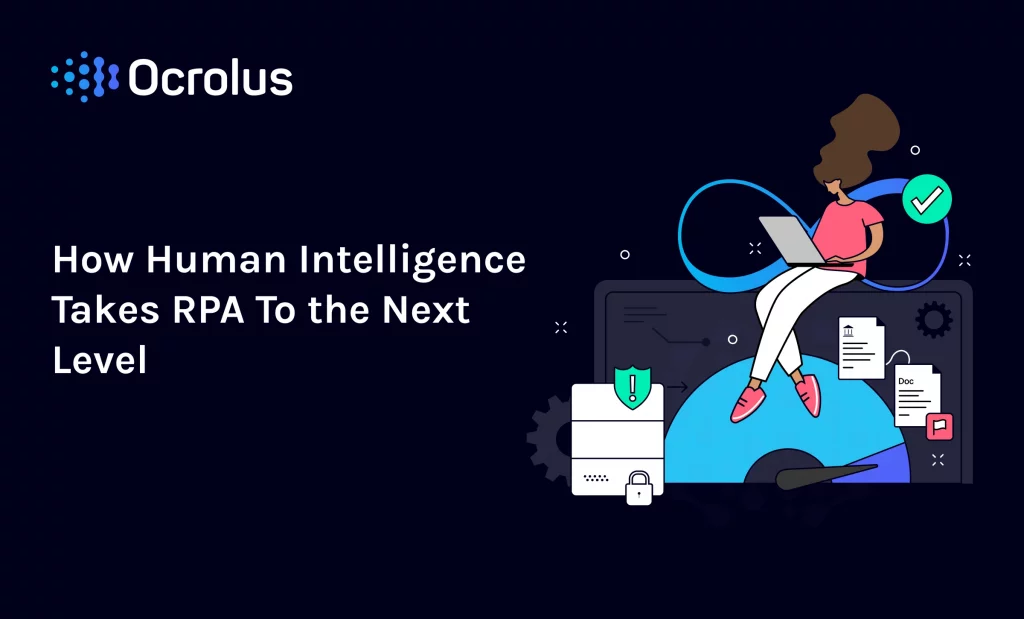This website uses cookies so that we can provide you with the best user experience possible. Cookie information is stored in your browser and performs functions such as recognising you when you return to our website and helping our team to understand which sections of the website you find most interesting and useful.
Taking RPA To the Next Level with Human Intelligence

Robotic process automation (RPA) is automating work tasks in many sectors, and providing businesses with significant ROI and cost savings. Pricewaterhouse Coopers predicts that RPA could save businesses up to $2 trillion in workforce costs in the coming years.
The word “robot” implies that automation relies on non-human labor. For the most part, this is true. But in order to drive deep back-office automation, some RPA workflows rely on human-in-the-loop processes to turn unstructured information into structured data that robots can process.
Let’s dive into why human labor is essential to certain robotic process automation workflows, and how some leading platforms are introducing the human intelligence element while still maintaining the speed and efficiency associated with RPA.
Automation with Human Intelligence: Wait, What About the Robots?
First, let’s discuss what robotic process automation is and the two different types of RPA intelligence. Robotic process automation refers to software that completes repeatable business tasks normally handled by humans. Attended RPA requires humans to help robots complete tasks, while non-attended RPA is fully automated by robots.
But why do robots need human intelligence at all? Robots experience difficulty processing data that is unstructured. RPA needs structured data – information that is pre-defined in a logical manner – to execute workflows.
In order to manage unstructured datasets, robots must first capture and create structured data using advanced capabilities like optical character recognition (OCR) and natural language processing (NLP). But even these technologies may require human intelligence to define and verify unstructured datasets.
For example, it’s easier for a human to identify stop signs and train a robot to recognize them than it is to build a robot that can automatically detect them. But once an RPA robot knows something is a stop sign, or a car, or a road, it can automate traffic analysis much faster and more accurately than a human can. This is the kind of benefit that human-in-the-loop RPA workflows offer.
When Is Human Input Necessary in RPA?
Although OCR and other technologies are effective at turning unstructured information into structured data, there are outer limits to the technology. Human review is usually necessary to define data that is challenging for a machine, to verify data for quality control purposes, to contextualize data, or to otherwise complete processes that automation cannot.
For instance, human workers might be required to:
- define a smudged or blurry letter
- distinguish a sweater from a vest
- contextualize data as a beginning balance, an ending balance, a withdrawal, a credit, or other transactions
- systematically check for data accuracy
RPA workflows also enable humans to execute at the “action” level of decision making. A robot can point out potential PhotoShopped legal documents, and a human fraud detection expert can then decide if the instance rises to fraud. Robotic process automation helps eliminate the grunt work surrounding business processes so that humans can focus on high level decision making.
How Are Leading Solutions Harnessing Human Intelligence in RPA Workflows?
While some solutions build human intelligence into RPA workflows, others require customers to seek third parties. Here are a few examples of how businesses are taking RPA to the next level with human intelligence:
- Figure Eight takes raw data in the form of text, images, video, and audio, and turns the information into structured data by leveraging human-in-the-loop processes. Figure Eight’s inclusion of human intelligence allows customers to create complex structured datasets for robots.
- Ocrolus is a fintech platform that analyzes financial documents, such as bank statements, pay stubs, and tax forms, with over 99% accuracy. Using artificial intelligence and crowdsourced validation, Ocrolus converts the information on financial documents into structured data and verifies the data with human quality-control technicians.
The Ultimate Goal: End-to-End Automation
RPA workflows that incorporate human intelligence have the potential to drive faster and more comprehensive automation by opening up the viability of additional datasets. By helping to structure and verify datasets, human workers are providing the gasoline that fuels RPA’s powerful engine. As a result, humans can focus on more cerebral tasks.
That’s why platforms with human-in-the-loop technologies are well-positioned to unlock the end-to-end automation possibilities that RPA offers. Platforms that streamline the process of data capture, analysis, and verification with human-in-the-loop solutions are synergistic plugins for robotic workflows, facilitating the broader deployment of robotic process automation.
Ready to learn how Ocrolus can help you take automation to the next level with a human-in-the-loop approach? Book your demo today to speak with one of our automation experts.





